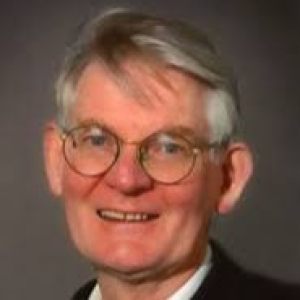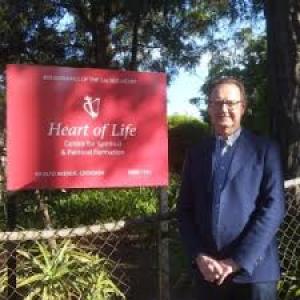Peter MALONE
Revelations/ Gyesirok
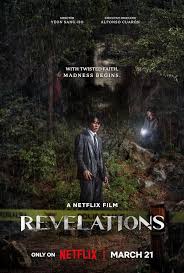
REVELATIONS/ Gyesirok
Korea, 2025, 122 minutes, Colour.
Ryu Jun-Choi, Shin Hyeon-bin, Shin Min-jae.
Directed by Yeon Sant-ho.
Revelations is an intriguing Korean film.
While the core of the action is a focus on a criminal, abducting a young women, there are two main strands in his pursuit.
The first focus is religious, acknowledging the presence of Christianity in Korea, many churches, evangelical, Scripture-based, gatherings and song. The community, the small local church, is led by an enthusiastic and devout pastor, devoted to and relying on Scripture, very earnest, and, in fact, welcoming the criminal who has followed one of his prey into the church. The pastor wants to save him. Meanwhile, there are complications in his life, the behaviour of his wife, her ambitions, the possibility of his leading a far bigger church and community in the city.
The second focus is that of a policewoman, whose sister was harmed by the criminal and killed herself. There are flashbacks to the court case, a focus on a psychologist and her blaming him – although later going to him for help in her investigation.
What makes this film different is the character portrait of the pastor, his growing religious obsessions, seeing signs, convinced of his own insights, making errors, eventually taking issues into his own hands, on a path to self-destruction.
On the other hand, the policewoman is helped to face her demons, to confront the pastor, to confront the criminal, uses her wits and talents, with the help of the psychologist, to face her obsessions and begin a new life.
While the criminal case and the investigation are well handled, the distinctive feature of the film is the portrait of an earnestly religious person, convictions, scriptural based, personal obsessions and delusions.
- The religious terms of the title, the solving of the crime?
- The Korean setting, the city, the church, homes, police precincts, crime scenes, hospital, the abandoned factory? The musical score?
- Police thriller, detection? Religious film, the focus on the Pastor, his vocation, his religious perspective? The small church, the community, biblical texts, hymn singing, enthusiasm? Grief, the memorial for the dead?
- The pastor, his age, experience, his marriage, the private detective, the evidence of his wife’s infidelity? The effect on him? Driving with her, the notice about the new church to be built, her comment about his being suitable as pastor, his visit to the main official, the discussions about who should be pastor, the main official and his son, the encounter with the son and his reluctance to be pastor? The later revelation about his adultery and his being sent away on mission?
- The street scene, the young girl, being followed, Kwon and his look, following, through the streets, her going to the church, the singing, her later leaving, the accident in the shop, the encounter with the detective?
- Kwon, going into the church, the pastor detaining him, the conversation, his reluctance, his name, the form, photo, the phone call, Kwon leaving? The later news of the abduction of the young girl?
- The film’s exploration of the religious attitudes of the pastor, his faith, believing in signs, his prayer, his enthusiasm, evangelisation, making connections, piety, religious ambitions, the impact of his wife, the truth about Kwon, criminal past, ankle bracelet? The psychiatrist and his naming of the pastor’s issue, too many religious connections and convictions?
- The detective, the past story, the court case for Kwon, the abduction, his getting off , the psychiatrist and his testimony, her sister’s suicide, a presence to her, ghostly wanting vengeance, her blaming herself? Her relationship with her father? His concern? Her being part of the detective squad, being welcomed? Her young partner?
- The pastor and is apprehensions about Kwon, the phone call from his wife, forgetting to pick up his son? Seeing Kwon, the suspicions, following him, stopping, his son not in the car, the confrontation, the fight, Kwon falling, the pastor dragging his body, over the cliff?
- The effect on the pastor, his religious justification to himself, religious, righteous? Yet haunted? the phone call to say that the son was safe?
- The detective, her concern about Kwon, the mountainside, no body? The pastor coming with the abducted girl’s mother? His question about there being a body? The growing suspicions of the detective?
- The pastor, conscience, going to the main official, the official and his grief about his son? Offering the lead of the new church to the pastor? The pastor wanting to confess?
- The confrontation with his wife, making her confess out loud, taking her to the centre, the information about Kwon and his struggling, upstairs, the pastor taking him, in the car, to the factory, binding him? Threatening him, asking about the whereabouts of the girl, Kwon and his manipulation, saying that he could not find out where she was if he was dead?
- The impact on the pastor, his going home, more frantic? Seeing religious signs in the sky and the atmosphere?
- The detective, going to the psychiatrist, the psychiatry of the pastor, the file on Kwon, discussions about the one eyed monster, his art, his story, her awareness, her father’s phone call, the building, the window?
- Kwon’s file, the photos, the art, the story of his beatings, his scarred body, scarred psyche?
- Communicating information, driving through the city, arriving at the factory, finding Kwon, the interactions, his taunts, the arrival of the pastor, his time the detective up, confronting, becoming more obsessed? The detective getting free, Kwon helping her with the weapon, his falling from the window, her trying to hold on, his collapse?
- The psychiatrist, the discussions, the awareness of the house, the rescue of the girl?
- The pastor, his obsessions, in jail, not believing that the girl was still alive, the visit of the detective? His future? Her salvation?
Caught/ Atrapados
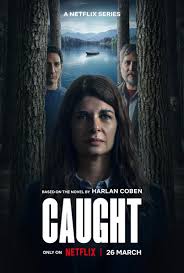
CAUGHT/ Atrapados
Argentina, 2025, 6X 50 minutes, Colour.
Soledad Villamil, Alberto Ammann, Juan Minujin, Matias Recalt.
Directed by Miguel Cohan, Herman Goldfrid.
While Harlan Coben had a very successful career with his books from the 1990s, he signed a contract with Netflix for adaptations of his novels as television series. With the series, they are not set in the United States. Rather, some are set in England, some in France, Spain, several in Poland, and this one in Argentina.
What seems something of a straightforward plot in the first episode, the development is quite complex, a number of strands, and a final, perhaps to many, unexpected solution.
In many of the series, the focus is a central character, a strong woman. As is the case here. A widow, teenage son, journalist working for a magazine, getting a tip about a sexual predator and the possibility of a unmasking him. The accused seems to be a good man, running a centre for youth (and, unexpectedly, having a sexual encounter with the journalist in the first episode – which she acknowledges and becomes part of the investigation). He goes to a rendezvous with one of the abused young women and is arrested.
Most of the series is the continued investigation, the gathering of evidence, information, meeting contacts, some involvement of her son, her alienating him because of her continued devotion to her work.
One of the challenges of the screenplay is that there are many flashbacks, many of them not indicated at all, the audience having to come to realise that they are flashbacks, for example a flashback to the death of the journalist’s husband in a hit run and later confrontations with the driver.
As the plot develops, the journalist has some doubts about the guilt of the accused, pursuing leads, leading to a different world, a world of finance and money dealing as well as sexual exploitation.
And, of course, mounting suspicions and a final revelation which we may or may not have been expected in terms of what the audience has seen concerning the character of the accused and his contacts.
A welcome addition to the Harlan Coben series.
- The popularity of Harlan Coben novels? The Netflix series of adaptations? From the US? Transferred to Argentina? Characters, situations, crime, twists, solutions?
- The Argentinian setting, the city of Baraloche, location, the water, the mountains, the city itself, homes, magazine officers, the camp for the youth? The musical score?
- The focus on journalists and investigations, personalities, intensity, persevering, clues, cameras, intrusive or not, following leads? The dangers of setups, for the accusations, consequences? Collaboration with the police or not, journalists and freedom, police and regulations?
- The focus on teenagers, at school, social media, exploitation, sex sites, performance, contacts, manipulation, grooming, consequences?
- The linear progress of the plot, the insertion of many flashbacks, sometimes not immediately clear that the scenes were flashbacks? The shuffling of time? Audiences adjusting to the final solution, the setting up of the plot, motivations, the encounters, big business, Martina, tips and the setting up of the investigation, the target to destroy Leo, the financial gains?
- Ema as the central character, the flashback to her past, her husband, the bond, cycling, hit run, the later confrontations with the driver, the final issues of forgiveness or not, her relationship with her son, teenage, tensions, intensity with her work, neglecting him, the scenes of clash, the party, his friendship with Fer, the boat, breaking in, his anger with his mother, moving out, the arrival of the financier, the threats? The final reconciliation?
- Ema, at work, her close collaborator and their friendship, her issuing orders, the friend and her investigations, the presence together, their boss, his sometimes hesitation, demands for copy, involvement?
- The Centre for the young, Leo as manager, the activities, Ema and her interrogation, the suddenness of the attraction, the sexual encounter, Leo being involved and accusations, Ema making public the sexual encounter? Leo as a personality, his son, his artwork, the separation from his wife, her running the restaurant, the scenes with his son? The story of the message from Martina, going to the rendezvous, the photographers, the accusations, his being arrested? His protests? His home, the hidden evidence of sexual molestation? Reactions, the story with Facundo and his wife, the attacks on their daughter, the bonds from the past, Facundo confronting him, shooting him, his falling into the river?
- Leo, on the run, his visiting Marcos, childhood friends, the flashback to their intrusion into the house, the financier, his mother, the maid, the breaking of the chandelier, the cuts to her face, the continued service, wary, looking after the mother, but collaborating with Ema? Marcos and his going to Buenos Aires, subsequent career, taking the blame for Leo, the difficulties in Buenos Aires, his return home, working with the financier? The issue of the land, owning it all, Leo holding out on the deal, trying to discuss with Marcos? Marcos at home, with the children, his wife, the interviews?
- Martina’s story, her parents at home, her playing the violin, practice, the audition, success? Social media, her friends, online, sexual performance, the website? The phone calls, the scenes of going to Buenos Aires, the financier’s plane, with Marcos, the financier, the sexual encounter and Martina upset, Marcos urged to look after her, the bonding?
- The final episode, audience sympathy towards Marcos, friendship with Leo, happy family life, helping Leo with the food, the flashbacks to the flight to Buenos Aires, more information about his business, the gradual revelation of his manipulating the situation, with Martina, the anonymous letter to Ema, planting the information?
- Ema, discovering the truth, Martina, her room, the information, her parents? The search for her body, finding it?
- Ema and the confrontation with Marcos, the fight in the water, Ema with the stone, wounding him, filming him, his desperation, phone call to his wife, driving into the logging truck, his death?
- The consequences for Ema, her reflecting on the investigation, being set up, the repercussions for herself, memories of her husband, unable to forgive that driver, giving the information to her son, the possibilities of his forgiving?
- The discussion with Facundo, his prison sentence, promoted to attempted murder, no body, and the possibility for Leo to survive? And the final sequence, Leo, on the horse, his future…?
Mickey 17
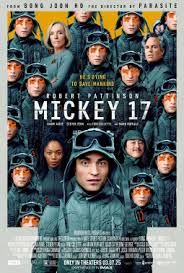
MICKEY 17
US, 2025, 137 minutes, Colour.
Robert Pattinson, Stephen Yeun, Mark Ruffalo, Tony Collette, Naomi Ackie, Patsy Ferran, Holliday Grainger, Daniel Henshell, Thomas Turgoose.
Directed by Bong Joon Ho.
There were high expectations for Mickey 17. Korean director, Bong Joon Ho, has had a prominent career since the 1990s, range of genre films including The Host, Mother, Snowpiercer and his Oscars, including best film, for Parasite. Here he is taken on an American story, and has treated it both seriously and satirically.
It is 2054, much of a muchness like the present in some ways, Mickey and his friend Tivo trying to raise money from a loan shark to start a business, failure, and the violent aggression of the loan shark. But, in this future, there is space exploration and the setting up of planets. There is also a great deal of scientific experimentation – including processes to create multiples of human beings, living, dying, and then being printed out again, identified with successive numbers. The morality of this process is being questioned.
Enter one of those evangelical church leaders, Kenneth Marshall, played with satiric zest and prominent teeth by Mark Ruffalo – aided and abetted by his smiling but domineering wife, played by Toni Collette. Marshall disapproves of the process but agrees that in some ways it could be useful, that the government should set up an expedition on a new planet, four a half years travel there, and set up a process for multiples, but only one at a time. And, with the succession of multiples, they are also described as “expendables”.
But we are also introduced to Mickey 17, Robert Pattinson enjoying his role. On the new planet, out scouting, he falls down a hole, is menaced by some strange creatures, wondering whether they are animals or aliens, not rescued by his colleague, but, saved, in fact by the creatures. Which gives him the opportunity to give a resume of his original life as Mickey Barnes, and the visual succession of all the numbers between one and 17. But, when he is presumed lost killed, Mickey 18 is printed out, Pattinson again, quite a different personality, tough, determined, rebellious…
And there is a range of characters on the planet, the scientists generally kowtowing to Marshall, young Dorothy being an exception and stepping in to help Mickey 17. Marshall has his sycophantic assistant, a yes-man, pandering to all Marshal’s exorcist whims, especially in organised religious television programs for the subservience staff on the planet. His wife is always there, but is experimenting with making sauces! In the meantime, there is an officer, Nasha (Naomie Acker) who is in a relationship with Mickey 17.
We can all this go? The capturing of one of the creatures and killing it, and holding a baby to ransom over a furnace. The two Mickeys confronting each other, Nasha and her coping with each of them, Tivo now involved in drug dealing and threats from the loan shark on earth.
There is a solution but, as with most of the film, not always predictable, always some surprises, some satire, some parody – especially with Kenneth Marshall and his final vanity in confronting the aliens.
The original book, by William Ashton, was published in 2022 and the film began production during the Biden era. But, released in the early days of the Trump era, many audiences will be making links! One reviewer noted that Bong Joon Ho was taking the Mickey out of the United States. Yes!
- Science fiction? Science fantasy? Political fantasy? Space exploration and development? Humanity issues? Moral issues? Philosophical issues?
- The career of the director, films in Korea, range, science fiction, Oscars for Parasite?
- The credibility of the plot, situation on Earth, 2054, ordinary life, Mickey and Vito and their plans, finance, the loan shark, the threats? But the political developments, scientific experimentation, production of multiple persons, moral issues, political? The intervention of Kenneth Marshall, support of his wife? His speech, the panel listening, agreement, setting up the centre on the planet? Moral issues, only one multiple?
- The visuals of the planet, wintry, the spring season, the centre, interiors, rooms, laboratories, meeting room, television programming? The musical score? Songs?
- The prologue, Mickey, the confrontation with the creatures, falling down, Vito and his taunts, no help? Setting up an atmosphere?
- Mickey, Robert Pattinson’s performance, as 17 and 18, his background on Earth, volunteering, is recounting the various stages of his life, further printing after deaths, the range of deaths, the range of personalities, situations, experimentation and testing? His relationship with Nash and her support? Mickey 17, in the snow, the story of his acceptance by the creatures, communication with them, the rescue? And discovering that Mickey 18 had been produced?
- Mickey 18, the different personality, strong minded, confrontational? Encountering 17, their interactions, the episode with Nash, the drugs, sexual encounters? The building up of tension? Especially towards Kenneth Marshall? The agent and her discovery of 17, the attraction, the confrontations with Nasha?
- Kenneth Marshall, the religious background, the church, his moral stances, vanity and position, relationship with his wife, her advice, domineering? His ambitions, the plan, the multiples, overcoming his moral scruples? His ambitions for success? His manner, his teeth, speech, presiding at meetings, his assistant as flattering him all the time, his interactions with the lab managers, their subservience to him? His wife, her manner, the cooking, the sources?
- The confrontation with the aliens, the taking of the baby, the shooting, one creature destroyed? The massing of the aliens, the leader? 17 and his ability to communicate? The work on the translation device? Dorothy, her work, personality, helping the Mickey’s?
- Marshall, his plan, discovering the two, the explosive device to destroy each of them? The flatterers, television, his going out, the speech before destroying them, his continued vanity? His wife waiting at the studio watching?
- The Mickey’s, the previous clashes, the fights, 17 to fall down into the furnace, saved? With Nasha? Her confrontation with Marshall? Strong-minded?
- The contact with the aliens, 17 and his communication, Marshall discovering this, the upset? The aliens and then manoeuvres, massing to conceal the leader, then dispersing, the confusion? The condition of the return of the baby threatened over the furnace? Nasha having to hold the baby’s rope in her mouth?
- The plan is to fire, Marshall unable to give his speech, the explosions, his death? The aliens, the return of the baby? Possibilities for peace?
- Six months later, Spring, the assembly, Mickey 18 sacrificing himself for the explosion, 17 and his presence, Nasha and her speech, the flashback and his memories during her speech, then his pressing of the detonator to destroy the multiples machine?
- The banning of multiples? The machine, Marshall’s wife, her reproducing her husband? She being a multiple?
- The tone of the film, comic and serious, satiric, some parodies, especially Marshall in the Trump era, but issues of science, humanity, ethics, philosophy?
One of Them Days
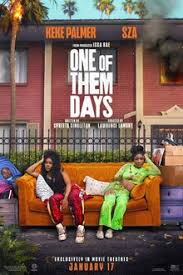
ONE OF THEM DAYS
US, 2025, 97 minutes, Colour.
Keke Palmer, SZA, Vanessa Cambell Calloway, Lil Rel Howery, Gabrielle Dennis, Janelle James, Amin Joseph, Joshua David Neal, Aziza Scott, Maude Apatow.
Directed by Laurence Lamont.
Week review: One of Then Movies. LA, loud. The hood, louder. All kinds of farcical situations, loudest.
This is the story of two friends, one who is successful in a diner and wanting to apply for managing a franchise. The other is an artist, talented, fairly irresponsible, absolutely erratic in her behaviour.
Most of the characters are in their 30s, the focus on women, some talented, some scattered, some fears. And it would seem that the target audience is the same women in their 30s. There are quite a number of men in the cast but so many of them are the subject of comedy, even ridicule.
And, except true character played by Maude Patel, all the characters and their situations are African-American.
Eccentric situation after’s eccentric situation is piled on the other, issues of not paying rent, being evicted, time pressures, issues of money being stolen, getting appear of train issues to sell them online to get the money, personal clashes and fights, suspicious characters, sympathetic characters at the interview for the job, jokes like a thief racing through every time there is a self-serve driving at a diner, all depending on one’s sense of humour.
But, despite everything, the chaotic scene at a blood bank, blood everywhere, there is a happy solution – actually occasioned by the white woman character.
And finally, Hollywood style after all the chaos, one of them happy endings!
(According to the IMDb, many of the target audience than the film very funny, hilarious. But, the question of whether the film would travel outside the good in LA, in other American cities – or beyond.)
RIP, Michael Fallon MSC
RIP, Michael Fallon MSC
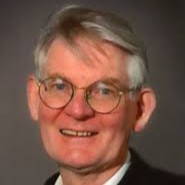
The sad news that Michael Fallon has died, after a short time in hospital. 16th April was his 88th birthday.
Michael was the youngest of the three Fallon brothers who joined the Missionaries of the Sacred Heart. Jim Fallon was a long time missionary in Papua New Guinea and Provincial Councillor. John was a long time missionary in the Northern Territory, Bathurst Island.
Michael made his first profession on Fabry the 26th 1955. He studied at the Sacred Hearts Monastery, Croydon, and was ordained 26th of June, 1961.
Michael’s initial ministry was an MSC education at Daramalan College and Chevalier College. He worked in chaplaincy at the University of New South Wales.
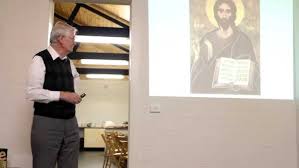
Michael was best known for his writings especially his extensive commentaries on the Bible, both Old Testament and New Testament. But, there were quite a number of other books over the decades. Michael was also well known and welcomed as a speaker on biblical and theological issues as well as spirituality. He produced many audio tapes as well as video sessions of his talks. Only recently, he gave a talk to the laity of the Chevalier Family at Douglas Park. Visit his website: https://mbfallon.com/ (To be found in the misacor website under works and ministries, media and publications).

Michael was a distinguished and distinctive Missionary of the Sacred Heart.
Visits to the Heart of Life Centre
Visits to the Heart of Life Centre
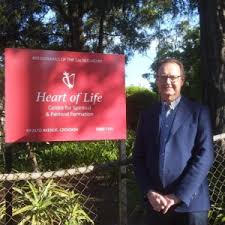
Heart of Life was blessed by the presence of Bishop Joseph and his Chancellor, Fr Thy, of the Phu Cuong Diocese in Vietnam with two local friends. Pre-COVID-19, one of Bishop Joseph’s priests participated in the Siloam Spiritual Directors program, and next year, he intends to send another (visa permitting). These close international connections continue to grow.

On the same day, we welcomed two leaders from a nearby Christian Church and had warm conversations about how Heart of Life can assist in the formation, training and support of their ministers. The leaders showed a mature understanding, deep care for their ministers, and the need for quality pastoral formation.
For Families - Holy Week and Easter, The King of Kings
For Families - Holy Week and Easter, The King of Kings
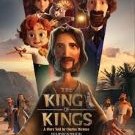
A film to help younger audiences appreciate the Gospel story - and enjoyable for the family
The King of Kings, South Korea/US, 100 minutes. Voices of: Kenneth Branagh, Oscar Isaac, Uma Thurman, Pierce Brosnan, Mark Hamill, Forest Whitaker, Ben Kingsley, directed by Seong-ho Jang.
Yes, the Gospel story. However, this film is an animation-dramatisation of a story by Charles Dickens, a story he wrote in the 1840s for his family, recited every Christmas by the author and read aloud in succeeding family generations, Dickens forbidding publication. However, in 1934, the family made it available over 60 years after the death of the author.
At the beginning of his story, Dickens wrote: My Dear Children, I am very anxious that you should know something about the History of Jesus Christ. For everybody ought to know about Him. No one ever lived who was so good, so kind, so gentle, and so sorry for all people who did wrong, or were in any way ill or miserable, as He was.
This film was made by a South Korean animator, Seong-go Jang, in Korean studios but uses the voices of some very talented English speakers, British and American.
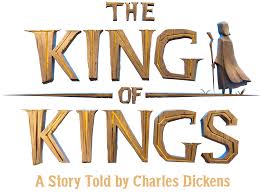
Dickens told the story to his family and in this film he tells it to his younger son, Walter, quite a spirited boy, absorbed by stories of King Arthur, swords and dragons. And he disrupts his father’s presentation on stage of Scrooge and A Christmas Carol. Dickens’ sympathetic wife urges him to tell the Gospel story, the young boy becoming more and more interested, initially wanting kings and dragons, but drawn into the story and following the person of Jesus. And, all the while, accompanied by his mischievous cat.
Which means that this is definitely a film for the younger audiences, but could be a pleasure for the whole family.
The animation style is vivid, the characters, the backgrounds, sometimes gently quiet with Jesus healing, with the apostles, at other times very vivid, especially Jesus walking on the water in the overwhelming storm. A great deal of the time is given to the Last Supper, the agony in the garden, Judas betrayal, uses trial and Caiaphas and Pilate, the crucifixion. Audiences who enjoy animation stories like this style and treatment.
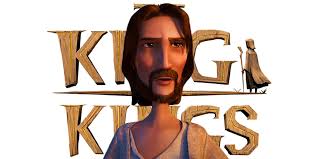
But, a key element of the screenplay is having the young boy enter into all the action, observing close-up, being with Jesus, listening, watching, admiring, dismayed… And, at times, Dickens himself comes with his son into the action, close-up, and all the while with Kenneth Branagh’s narration as Dickens. The device of having Walter within the Gospel story is a great means for younger audiences also entering in, identifying, learning about Jesus and his story with a devout theme-highlighting commentary by Dickens.
St Ignatius Loyola founder of the Jesuits, would probably endorse this film. In his Spiritual Exercises, he urges those making retreats, or at any time with gospel contemplations, to enter into the scene, to be there, to experience the Gospels. And, a great challenge to those on retreat is to ask them where they are in the scene, at a distance observing, or very close to Jesus. This film dramatises what this closeness could be like.
The voice cast is very strong, not only Kenneth Branagh, but Uma Thurman as his wife, Mark Hamill is an extraordinarily rambunctious and King Herod pantomime-like , Ben Kingsley is a thundering villainous high priest, Caiaphas, Pierce Brosnan is a disdainful Pontius Pilate – and Oscar Isaac is Jesus.
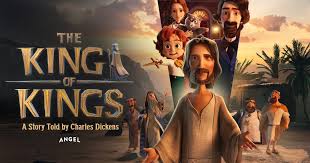
In 2000, the animated film, The Miracle Maker, with Ralph Fiennes as the voice of Jesus, was very successful in portraying the Gospel stories. Now, The King of Kings is a very welcome addition.
Importance of Being Earnest, The, National Theatre
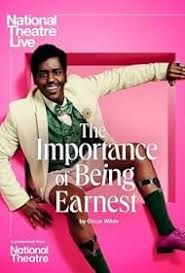
THE IMPORTANCE OF BEING EARNEST
UK, 2025, 179 minutes, Colour.
Ncuti Gatwa, Hugh Skinner, Sharon D.Clarke, Eliza Scanlon, Ronke Adekoluejo, Amanda Lawrence, Richard Cant, Julian Bleach.
Directed by Max Webster.
Once again, Oscar Wilde’s celebrated last play, from 1895.
In 1952, there was the straightforward basic staging as a drawing room comedy film, top English cast led by Michael Redgrave and Dame Edith Evans (and her still remembered classic outraged “handbag”!). It is frequently repeated for screenings on SBS World Movies and so readily available for audiences today.
There have been quite a number of filmed stage versions, even featuring David Suchet as Lady Bracknell.
There was also the 2001 version, very strong cast led by Colin Firth and Judi Dench as Lady Bracknell, but with something of an eye to modern tastes, even imagining Gwendolyn with a tattoo and the idea that Lady Bracknell began her career in the music hall. There were also some notable (inexplicably) omissions from the text.
Now here is the film version of the National Theatre’s 2025 production, complete text to delight those who have appreciated it for a long time. But the word definitely not to be used here is “straightforward”. This is not exactly a straightversion. Commentators on the play have referred to the “queer codes” inserted by Wilde, implicit references.
An unexpected opening sets the tone, Ncuti Gatwa (television’s Dr Who) in a pink gown, playing the piano, a Grieg Symphony, joined by the cast dancing around the piano. Then, stopping suddenly, the curtain opening – and we are back in 1895.
The opening is familiar, Jack visiting Algy, the conversation, Jack’s love for Gwendolyn, the imminent arrival of Lady Bracknell… And the mystery of Jack being Jack in the country and Earnest in the city and Algernon and his creation of his sick friend, Bunbury, whom he has to visit to comfort at a moment’s notice. Themes of deception, relationships. But, while Hugh Skinner as Jack gives an effective performance, he is quite overshadowed so often by Ncuti Gatwa, Jack almost playing straight man (the technical comedy term) to Algernon’s flamboyant domination of the friendship and the play.
It is apt to describe the production as camp in style, manner and mannerisms, but a great deal of posing, lots of postures, running and shuffling around the stage and a great deal of innuendo.
Every audience waits to see what Lady Bracknell is going to be like, a dominating presence, her articulation of opinions, her capacity for being shocked and astounded. Sharon D. Clarke certainly dominates this production – with “handbag” voiced in low, deep dismay. She controls the main two scenes in which she is present, both snobbish and exploitative when tempted by money and class.
Australian Eliza Scanlan is a forthright Sicily. Ronke Adekoluejo is an unexpectedly knowing Gwendolyn, hyperactive (sometimes irritatingly so) and extrovert in the innuendo in a very cheeky tone. Audiences will enjoy the performers playing Miss Prism, Canon Chasuble and the actor playing the two servants.
It is probably correct to say that Oscar Wilde would have enjoyed this particular interpretation of his play, making explicit the issues in his own life and relationships, but we also remember that this was his last play, the court case, his public humiliation, imprisonment and lonely death.
My Penguin Friend
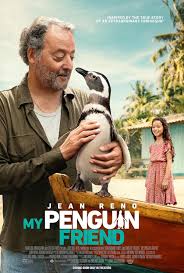
MY PENGUIN FRIEND
Brazil/US, 2024, 97 minutes, Colour.
Jean Reno, Adriana Barraza, Alexia Moyano, Pedro Urizzi, Duda Galvao, Thelma de Freitas.
Directed by David Schurmann.
My Penguin Friend is based on a true story, a story of a migrating penguin, from Patagonia to an island off the coast of Brazil. There are clips of the actual penguin and friend during the final credits.
This is a Brazilian film, it has an international cast, the French Jean Reno, the Mexican Adriana Barazza, and the dialogue is all in English – making it accessible worldwide in the English-speaking world.
The opening credits include a camera tracking over much of the world, narrowing down to Brazil and the island. We have glimpses of life on the island, youngsters at school, a working family, a very cheerful little boy celebrating his birthday and putting pressure on his father to take him out rowing to sea. However, a huge storm and tragedy.
The scenario moves forward several decades, the father, Jean Reno, still grieving, isolated from the other members of the village, managed by his rather stoic wife, Maria, Adriana Barraza.
It all changes when we go to Patagonia, see the colony of penguins, their taking off for migration, an oil slick, and the father finding the bereft penguin, washing, cleaning it, caring for it, his wife in the meantime rather impatient, but eventually the penguin finding a home on the island, making its own barrow, a little girl finding a name for it, Dimdin. Audiences will enjoy this sentiment, and the fact that Dimdin makes this annual journey eight times.
There is a subplot about scientists studying penguins, migration, hoping for grants for their work. In the meantime, the father has reluctantly allowed himself to be interviewed and the program with him and Dimdin goes viral. The scientific team identify the penguin when it comes to Patagonia and are interested in furthering research.
Audiences generally like penguins very much. And this penguin and the film are very likeable.
- Audience liking for and response to penguins?
- The opening credits, the maps, tracing over the maps, arriving on the island off Brazil, travel to Patagonia? Brazil, the town, the beaches? Patagonia, the isolation? The musical score?
- The penguins, 80% real, 15% CGI, 5% and Medtronics?
- The opening story, Miguel and Kalista, the happy boy, the bond, the birthday gift, scenes at home, his parents, love, the birthday, with his father, the impending storm, the boy’s insistence, their rowing out, the storm, the anchor, the boat overturned, the boy drowned, the father trying to rescue, grieving? The consequences for later and the rescuing of the penguin?
- The present, Joao, at odds with the other people in the village, at home, Maria, the relationship, the grief? Kalista and her daughter?
- The scenes of the penguins, the commentary, and migration? The penguin and the oil slick, on the Brazilian coast, rescued by Joao? Loving care, the details, washing, the clothing, the exasperation of Maria and her cleaning up after, the time passing, the bonding? The people of the town, Lucia and her naming the penguin, Dindim?
- The response of people to Dimdin, becoming part of their life? At home in the house, the borrower, the time for leaving? The return to Patagonia?
- Eight years, Dimdin coming back, part of the life of the town? Joao and the interview with Paolo, the discussions about the interview, changing his mind, the interview going viral, known around the world?
- The subplot of the researchers, their work in Patagonia, identifying the penguins, studying the migration, Adriana, Carlos and his scepticism, Stephanie, the different attitudes? Contact with universities, the possibility of a grant? The visit, identifying Dimdin, keeping tabs? Plan to keep Dimdin, for the University, in the vein, letting Dimdin escape?
- The town, everybody anxious, Dimdinn not returning? Joao and going out to search, the false alarm, finding Dimdin, the happiness and reconciliation in the town?
- A pleasing film for family audiences? Based on a true story – and the final credits and the video clips of the real Joao and Dimdin?
Man from Coxs River
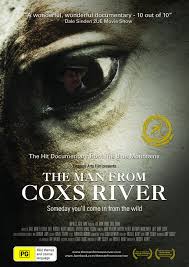
THE MAN FROM COXS RIVER
Australia, 2014, 88 minutes, Colour.
Norma Carlon, Luke Carlon, Chris Banffy.
Directed by Russell Kilbey.
Title is meant to echo, and does, the classic Australian problem film, the Man from Snowy River. The emphasis is on the mountain outback, horses, brumbies, 19th century.
This is a 21st-century documentary, the focus on brumbies, especially in the Megalong Valley, the Blue Mountains. There is a divided issue about freedom for the brumbies, the wild horses and their feral way of life, the difficulty with their roaming wild, travelling the countryside, the challenge to the environment. And the political question of culling them or transporting them – and the skills for each approach.
The focus of the documentary, which is beautifully photographed and wonderful mountain and valley scenery of New South Wales, is the Carlon family. A history of the Carl on men is given, but the talking head is that of Norma Carlon, widow and mother, a welcoming host to explain the situation, the history, the family and involvement. On the other talking head, also sympathetic, is Luke, her son, carrying on the family traditions. And one of the main traditions in the late 20th century was organising tours for groups to ride horseback exploring the countryside. But then came the naming of wilderness areas and national parks and the access was too difficult.
With the move against culling the brumbies, Luke and his associates become involved with ranger, Chris Banffy, in rounding them up, corralling them, taming them as best as possible, leading them onto vehicles and transporting them to other locations. The film notes that the challenge is to remove 80 of the horses to make this part of the valley and the Megalong environment environmentally safe and acceptable.
There are quite a number of sequences of the rounding up of the horses, more difficult than audiences might have been expecting. And then there is the reaction of the horses to the curtailing of their freedom, lots of sequences in the corral, the energy of the horses, even young foals, and horses lying down and remaining on the ground in protest.
Eventually, a number of horses are rounded up, tamed and taken away.
The focus of the issue here is New South Wales and the Megalong Valley but there are other parts of Australia where the problem still remains – and, especially in the mountains of the Snowy River terrain.
